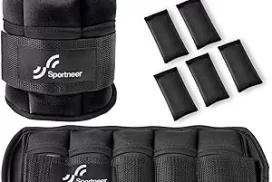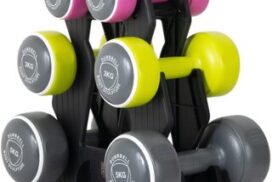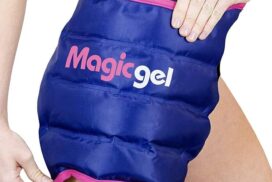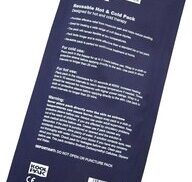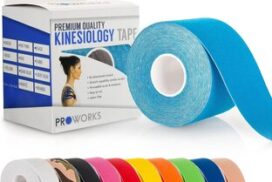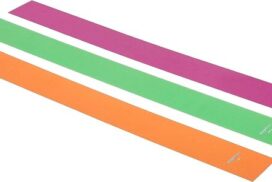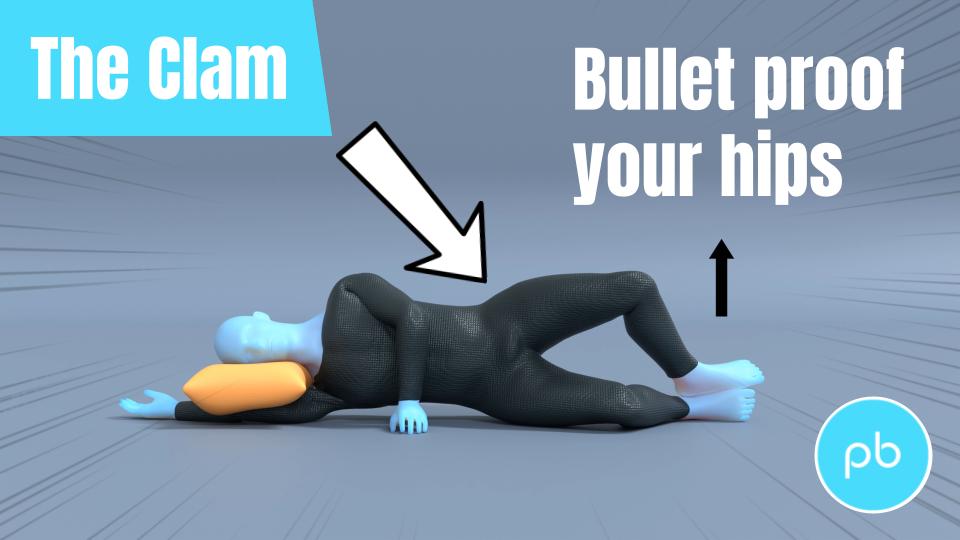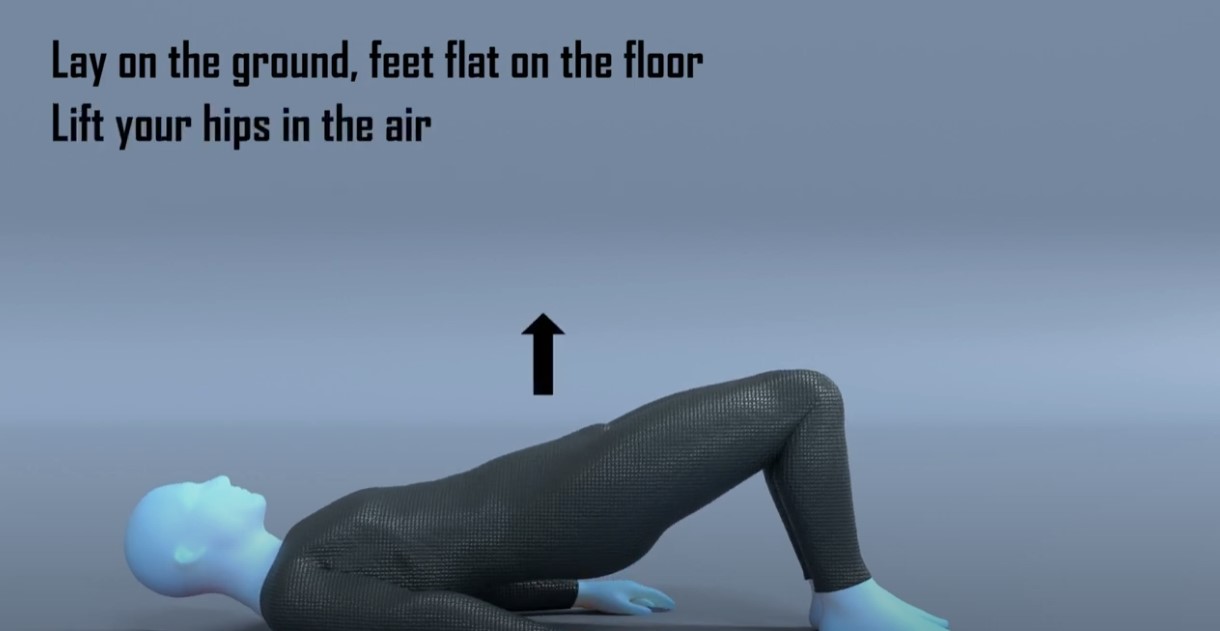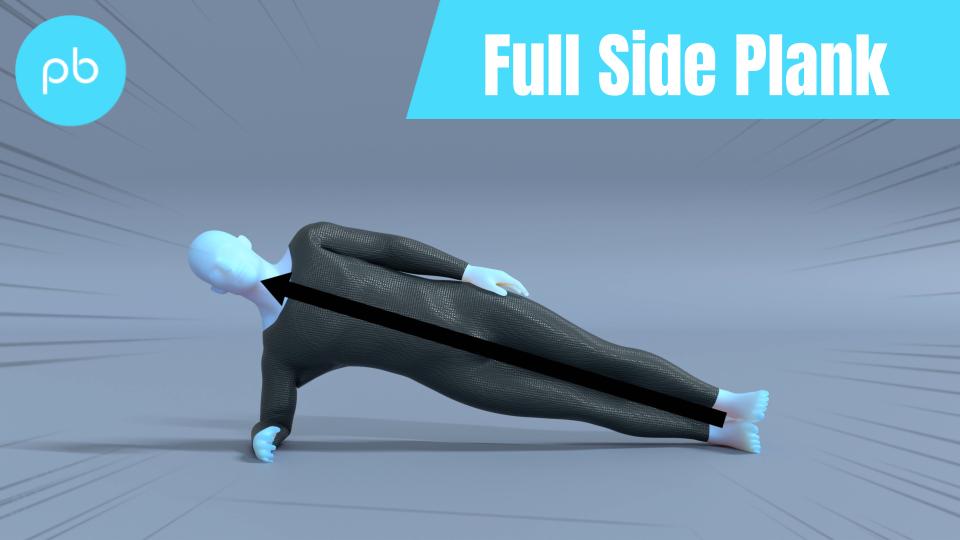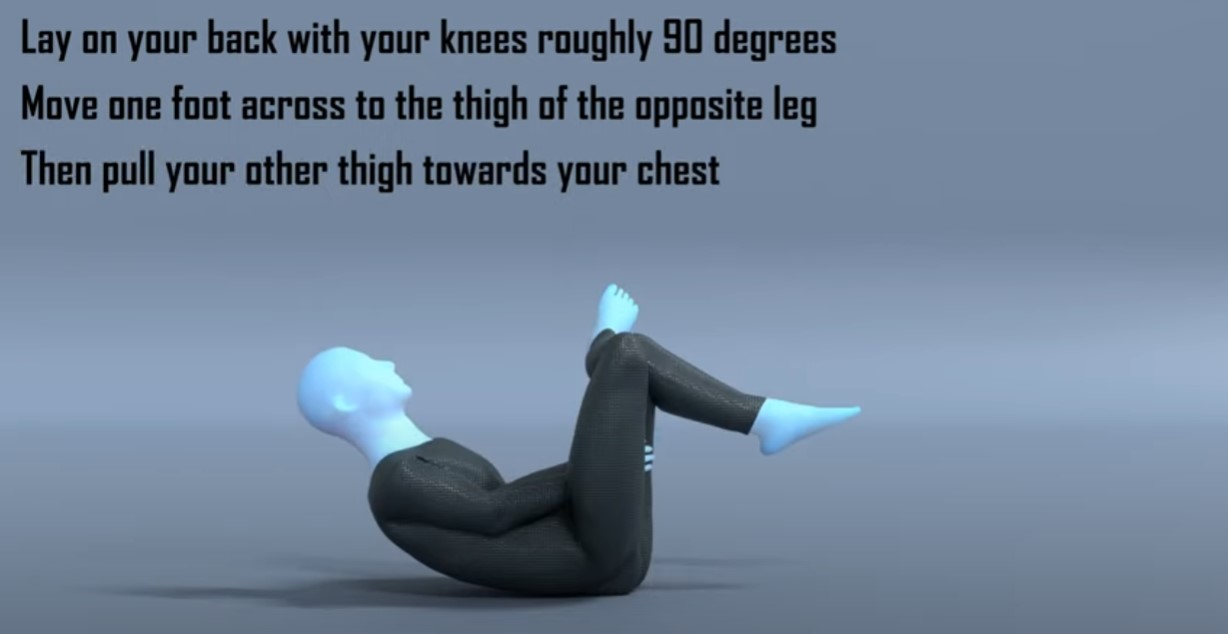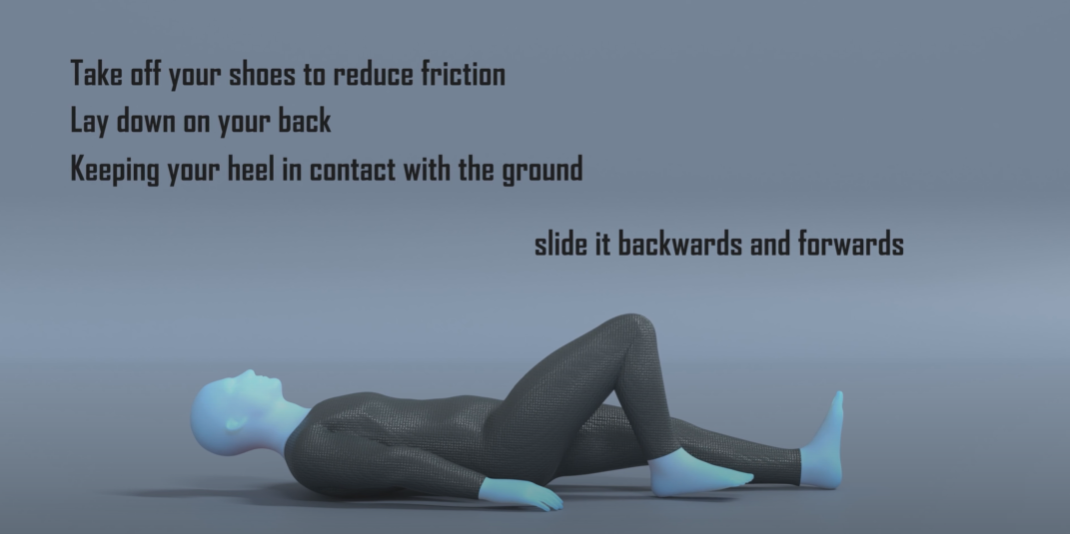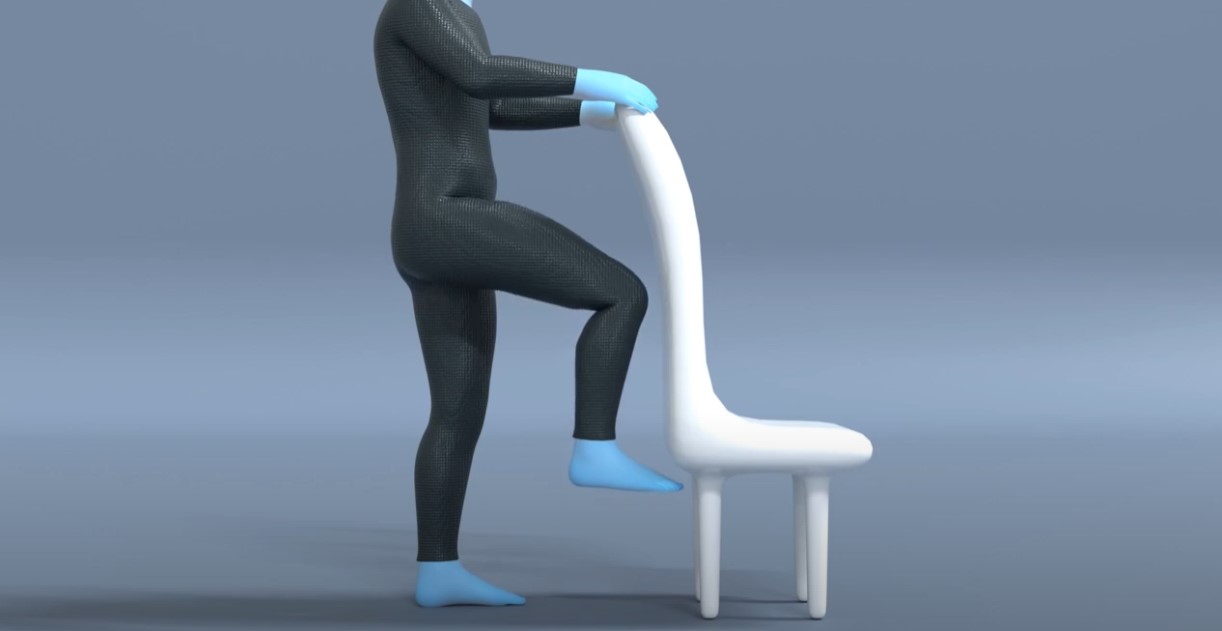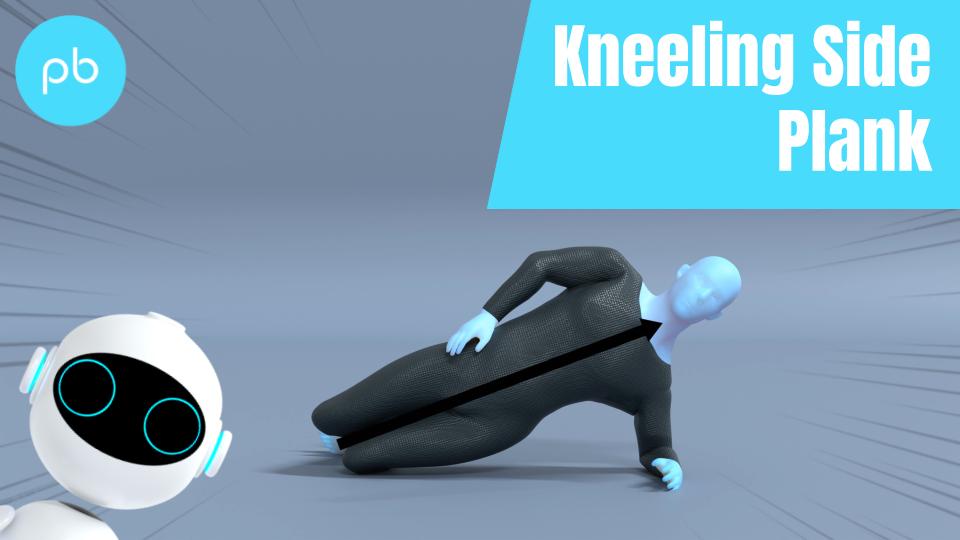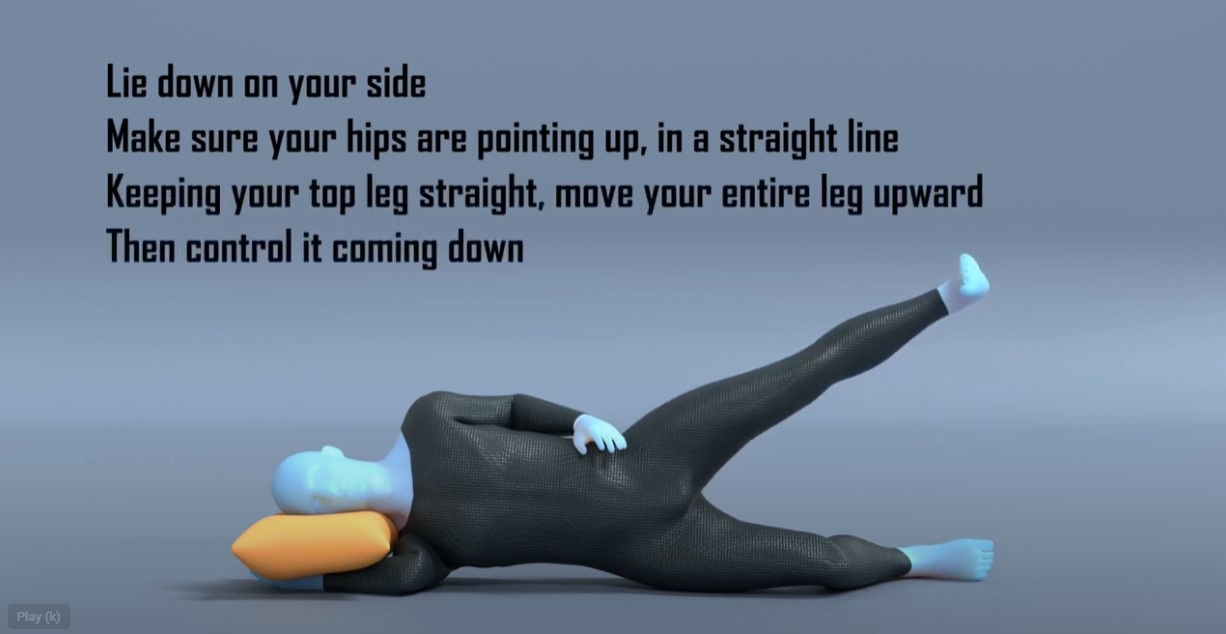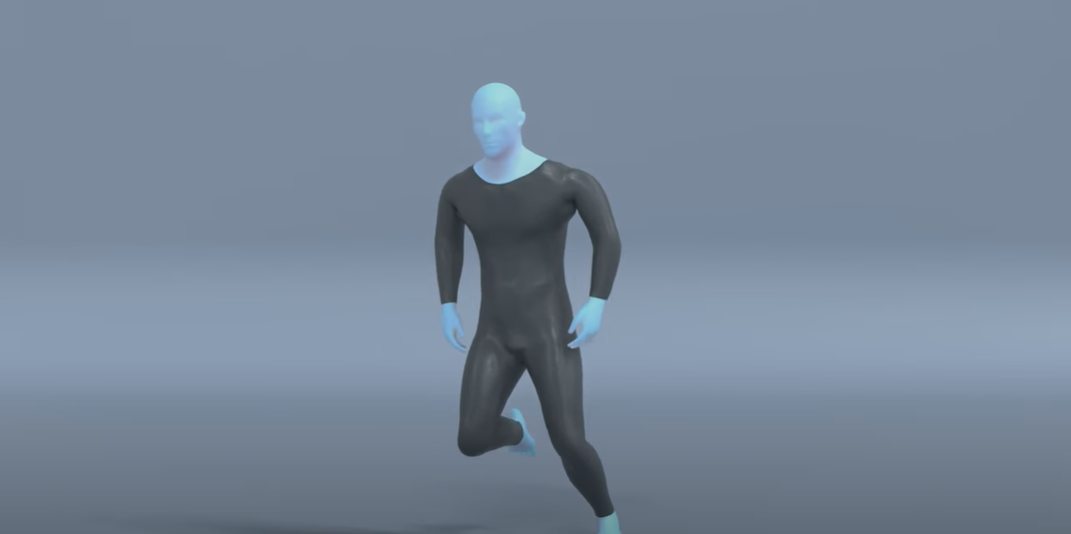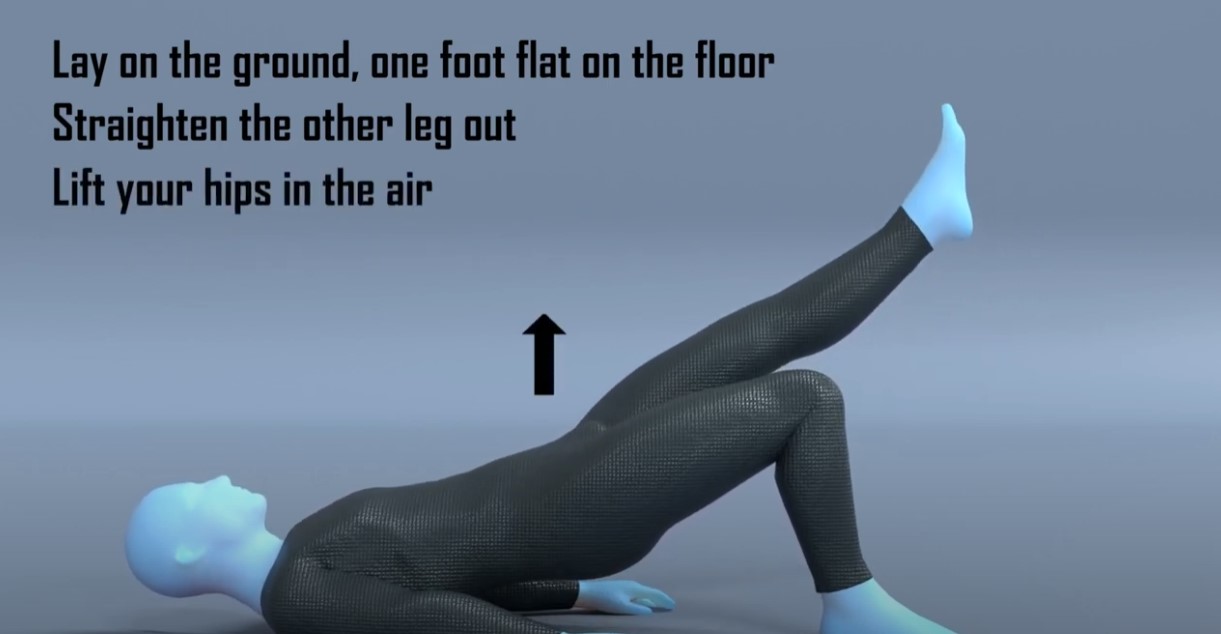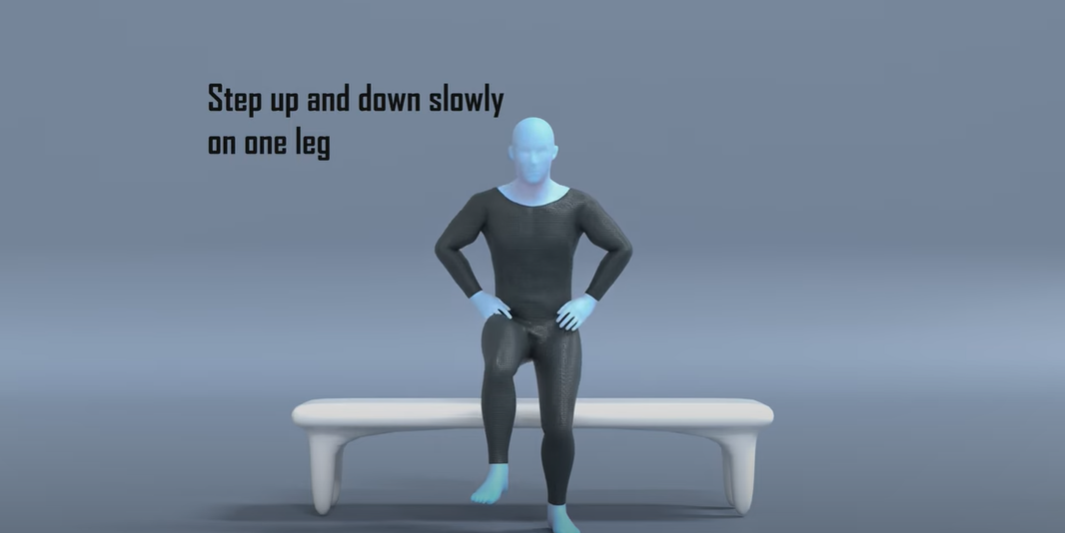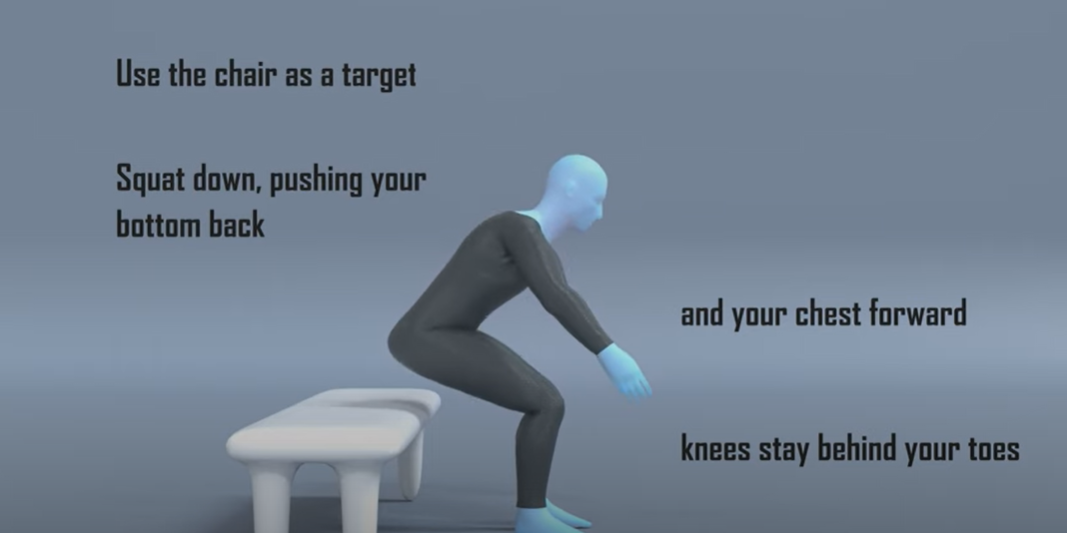
General Programme
Welcome to your free, general rehabilitation programme covering management and treatment options, exercises and equipment that could help. Scroll down to read more or use the sidebar icons to skip ahead.
Use our symptom checker for a more tailored rehabilitation programme.
Hip Pain Management
Click each phase heading to see the progression of your management programme.
This phase is normally the first 24-72 hours after the event that has triggered your symptoms and its aim is to settle any swelling and show you how to relieve hip pain, whilst maintaining the range of motion and function you have.

RICE
RICE stands for Rest, Ice, Compression and Elevation. These steps are helpful for when you have an injury in the acute phase to help reduce pain and also with the healing process. With a hip injury it is generally impractical and not particularly beneficial to perform the elevation part of this treatment method.
Rest: You need to reduce the activity level you are performing and let your body have time to heal. The aim here is to pace your activities throughout the day and cut back on anything unnecessary or that particular increases your symptoms.
Ice: This can help reduce the pain you are experiencing and also reduce some of the swelling if you have any, almost acting as a hip pain reliever. Using some frozen peas wrapped in a damp cloth for 20 minutes will work well here and do this every hour or two. Do not apply the ice directly to your skin, make sure you have a barrier which is preferably damp, and keep an eye out for any ice burns onto the skin. If you notice this stop immediately.
What can be helpful here is having a specifically designed ice pack you can reuse over and over again. You still need to have that damp cloth as a barrier with these packs as well.
Compression: This relates to the use of the ice being compressed onto the hip region. This can be achieved by simply wrapping a cloth around your joint, but more bespoke equipment offers this ability which would be more comfortable and effective, such as a hip ice pack. You may find this part of the treatment irritable and if this is the case you can simply skip this part.

Medication
In the initial phase the use of over the counter medication may be an option. Medication such as paracetamol and ibuprofen may allow this acute phase to be more manageable. Please consult your family doctor if you have any concerns with this impacting your current medication, or if any medical history may be impacted by the option of including this medication.
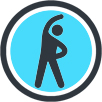
Exercises
The aim here is to maintain the hip movement you have, and ensure we keep the muscles and tendons across the front of your hips active. Any hip pain and leg pain you are experiencing shouldn’t be irritated with these exercises. If you have any painfree hip clicking, or the feeling of a hip popping sound but no pain, you can continue the exercises.
You may find it helpful to do these exercises in a circuit type fashion, where you do exercise 1 for 1 set, followed by exercise 2 for 1 set, and then restarting.
| Exercise | Frequency | |
| Heel Slides | 12-15 reps x 2 sets | 3 x daily |
| Static Quads | 10 - 20 seconds x 2 sets | 3 x daily |
Some points to consider with these exercises:
- The heel slides should not be irritable and the focus is just on making sure we keep the hip and knee moving as much as possible. What angle you have your hip at to perform this, and how much you are able to slide your heel really doesn’t matter, the important thing is to move it whatever you can.
- Depending on your level of discomfort you may find the static quads exercise discomforting as it will be activating the tendons across the front of your hips a small amount, in this early phase just focus on doing what you can without aggravating your symptoms any further.
- Try to perform them little and often. Don’t get too focused on duration, sets and frequency. Initially it may be tough to perform the exercise for 10 seconds and 2 sets as it could be discomforting. Just slowly increase how long and how often you do them over the following weeks.
This would be roughly the first 2 to 4 weeks of your recovery.

Education
The aim here is to maintain the strength of the muscles surrounding your hips whilst we keep as much movement in the hip as possible. Most people want to know how to cure hip pain fast. But depending on the hip pain cause, it could take a number of weeks before you return to full fitness.
You have three muscles which make up the glutes, which are the group of muscles on the side and back of your hip. We will begin to work on these muscles in a non-weight bearing fashion initially and then later in the programme look at increasing the difficulty by performing exercises in weight bearing.
Muscles and tendons can take up to 8 weeks of resistance training to show changes of lean muscle mass and strength. However, you will still see a change in how easy it is to perform these exercises which you may struggle with from a strength perspective as the neural pathways of these movements develop.
You can continue any exercises from the previous phase but you may find they have less value as you progress through your rehabilitation, however the heel slides may act as a nice warmup before doing these exercises.

Exercises
These exercises are aiming to increase the strength of the muscles surrounding your hip and hopefully not irritate the hip with the movement produced. If you find any of the exercises too painful try and alter the angle you have your hip when you perform the movement so that it may reduce the irritation. If that hasn’t helped and you find the exercise repeatedly causes a spike in your pain, it may be best to avoid them for now and retry them at a later date.
There are many options for hip pain treatment, but often exercises are needed, and these are some of the best exercises for hip pain.
A good marker of when to progress from this phase is when you can perform these all with no pain and general daily activities are less discomforting. If you continue to get pain with your daily activities with no improvement in symptoms, progressing on to the next stage where the exercises are harder will most likely only increase your symptoms more.
You may find it helpful to perform the exercises in Phase 1 as a warm up before attempting these.
| Exercise | Frequency | |
| Clam Exercises | 30-60 seconds x 4 sets | 2 x daily |
| Hip Flexion in Standing | 12-15 reps x 4 sets | 2 x daily |
| Hip Abduction | 30-60 seconds x 4 sets | 2 x daily |
| Glute Stretch | 30-60 seconds x 4 sets | 2 x daily |
Some things to consider with the exercises:
- The exercises in this phase are to maintain the strength levels in the muscles in our hips and legs with some basic strength work.
- The first exercise is working the muscles on the outside of your hip which connect to the outside of your hip and is one of the best glute exercises you can do at the start of your rehab. You should start this exercise with no resistance band and simply move your leg. If that is too hard you can put a pillow between your legs and this will reduce the range of motion. Once this exercise is easy and causes no discomfort, you can get a resistance band and wrap it around your knees to make this exercise more challenging. Start the exercise trying to achieve 30 seconds, and once you can achieve this for 4 sets increase the duration progressively.
- Exercise 2 is not focusing on strengthening our hip flexors but instead making sure we keep the muscles at the back of our hips flexible. I wouldn’t put any weight on your ankles or use resistance bands with this exercise as the aim is to promote hip mobility and move the hip as much as you are comfortable, you don’t want to be limited due to your hip flexor weakness. If you notice any pain on the front of your hip when running, this exercise will hopefully begin to address any issues you have in this area.
- The third exercise is working the muscles on the outside of your hip, the gluteus medius and minimus. You should start this exercise with no weight and simply move your leg. Once this exercise is easy and causes no discomfort, you can use an ankle weight to make this exercise more challenging. Start the exercise trying to achieve 30 seconds, and once you can achieve this for 4 sets increase the duration progressively.
- You should not feel any sharp pain with the glute stretch, but some general ache is OK. Putting it at the end of your exercises will make sure the muscles are warm before attempting it. Start off gently and slowly increase the intensity over the weeks on how much you stretch this muscle group. If you follow the video for this exercise it will show you a great way on how to stretch tight hip muscles.
- You may find it helpful to do these exercises in a circuit type fashion, where you do exercise 1 for 1 set, followed by exercise 2 for 1 set, then exercise 3 for 1 set, and finally exercise 4 for 1 set. Have a break after performing each set for roughly 1 minute, and when you reach the end of the exercises restart at exercise 1.

Medication
You should expect to see the usage of medication reduced as you move through this phase. If you require medication to get you through the exercises, or immediately afterwards, perhaps you need to reduce the reps or duration of some of the exercises so that it becomes a little easier.
Massage
Massage can help alleviate any tightness in the muscles but these changes are normally short lived and a similar effect can be generated by performing the exercises. It’s unlikely that massage on its own will completely alleviate your symptoms but used alongside the exercises and other treatment options it may allow certain activities to be a bit more comfortable. You may find massaging the surrounding muscles, such as the quadriceps, hamstrings, adductors and lower back frees up the movement in the hip allowing you to perform the exercises with less discomfort. You could also massage over the gluteals but ideally you should not be massaging over any tendons or bony points as this will likely just irritate things further.
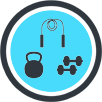
Strapping
Kinesiology strapping is very popular for many musculoskeletal injuries. The idea is that the tape helps support the muscles and tendons at the point of pain, and therefore causes less pain when doing exercises or general daily activities. The evidence for kinesiology strapping is mixed, and because of that some people find it’s really helpful whereas others find it doesn’t offer them much at all.
If you feel you are struggling to progress, or you feel your rehab is a little stagnant, or that general daily activities are still irritable, then it may be helpful to try this.
You can leave the tape on for up to 5-7 days but at any point if it feels hot and itchy take it off straight away. Have a day's rest of no tape before reapplying, and ideally test with a small strip before applying a big amount to you.
This video shows a general strapping method which you may find helpful in offering some support of the glute muscles which may make daily activities less painful.
If you have pain on the bony point on the outside of your hip, you may find this strapping technique helpful.
For any pain on the front of your hip, this taping method can help reduce your pain. If you are having groin pain on the inside of your hip, doing this taping technique could relieve your pain.
It’s likely that used alongside some of the other treatment methods it may offer some relief, but realistically on its own will not help completely alleviate your pain.
Foam Roller
A foam roller is used to offer self massage. They are marketed as a way to get similar results of a massage but without the reliance of a masseuse, making it more practical and cheaper for people to use. They are very popular within the fitness industry and with a lot of professional athletes using them within their warm-up and rehab routines. The idea is that similar to massages they increase blood flow to the area and also help with mobility by reducing muscle tension. Unfortunately the evidence on them having an effect on muscle length is minimal, and any change is short term, and the link that they reduce injury or improve rehab times is simply missing. Again similar to massage, a foam roller can be used alongside an exercise programme to help with symptoms and function, but used on its own will not improve performance. In this example you would be foam rolling the quadricep, adductor and hamstring muscles in the lower leg, do not foam roller over the area of pain on your hip as this will be painful and potentially irritate symptoms further.

Symptoms
During this phase you should start noticing more times in the day when you are pain free, however it is not uncommon for there to be sharp spikes in hip pain if you are doing a specific activity. This will improve and the activities which cause irritation should become less. If you continue to perform activities which consistently aggravate your hip, it will continue to cause you pain and perhaps be affecting the healing. You need to alter the activities in some manner that are causing irritation until you have moved further along in your healing where your hip doesn’t get so easily aggravated.
If you are struggling to wean off medication, experience hip pain at night when sleeping, still suffering from sharp hip pain when bending, have hip pain when walking, or struggle trying to perform the exercises in this phase, it may be helpful to be reviewed by a medical professional to ensure you are on the right path. If you are experiencing hip pain when coughing, or hip pain sneezing, this would probably be a trigger on when to see a doctor for hip pain. If they confirm there is no hip injury of concern, then you can continue through the phases in this rehab programme.
In this phase we are looking at between 4 to 8 weeks since the start of your rehabilitation.

Education
Similar to Phase 2 the timelines here are merely a guideline and may vary. You may find that you are able to start this phase before 4 weeks if the symptoms have settled and you aren’t challenged by the exercises.
A good indication that you are ready to progress onto this phase is that you generally don’t notice your symptoms with daily activities such as walking short distances or standing, and can perform the exercises from Phase 2 with ease.
The aim of Phase 3 is to introduce some low level glute strengthening exercises which you struggled with on the initial testing, along with some weight bearing exercises. You should at this stage be able to perform the exercises from Phase 2 with ease and not reliant on any pain medication to perform daily activities.

Exercises
The focus on Phase 3 is to reintroduce some low level weight bearing exercises and increase the intensity of the strength exercises at the hip.
| Exercise | Frequency | |
| Step Ups | 10-15 reps x 4 sets | 2 x daily |
| Double Leg Hip Bridge | 12-15 reps x 4 sets | 2 x daily |
| Sit to Stand or Squats | 8-12 reps x 4 sets | 2 x daily |
| Side Plank | 30-60 seconds x 4 sets | 2 x daily |
| Adductor Stretch | 30-60 seconds x 4 sets | 2 x daily |
Some things to consider with the exercises:
- You may find performing the exercises from Phase 2 acts a nice warm up before attempting these exercises which are slightly harder.
- The first exercise is a progression from both of the glute strengthening exercises from Phase 2 and aims to strengthen the muscles on the back of your hip in weightbearing.
- The second exercise is working the muscles on the back of your hip along with your lower back and hamstring muscles.
- The sit to stand exercise is easier than the squat exercise. If you struggle with the sit to stand exercise, raise the height from which you perform this movement from, this will make it easier to perform. If your balance is your limiting factor here, you can gently hold onto something to give you some support. Your aim should be to have equal weight bearing on both feet, but it may be the case you need to progress on to this. If you are struggling performing the squat then regress to the sit to stand exercise. If you are able to perform the squat and it eventually gets too easy, you can progress this and hold some weight during the movement.
- The fourth exercise is reintroducing one we performed during the testing, the side plank. You can start this exercise on your knees and once this is easy you can progress to a full side plank. Start with the lower duration and build up to the full 60 seconds over a few days or weeks. If this is painful whilst you do the kneeling version, simply miss it out for a week or two until your strength improves and you move further along your healing process.
- The final exercise is a groin stretch. If you have suffered from groin pain after running, or groin pain after football, along with strengthening the muscles, making sure you have full range in this movement may be helpful. Following the video for this exercise will show you hot to stretch a tight going.
- You may find it helpful to do these exercises in a circuit type fashion, where you do exercise 1 for 1 set, followed by exercise 2 for 1 set, then exercise 3 for 1 set, and finally exercise 4 for 1 set. Have a break after performing each set for roughly 1 minute, and when you reach the end of the exercises restart at exercise 1.

Pacing
At this stage you should find you can do more day-to-day activities pain free. The temptation here is to go a bit overboard. A nice reminder to pace activities so that you don’t over do it, and that you spread these activities out as much as possible throughout the day.
The final phase may not be necessary for everyone, however if after completing phase 3 you are finding you are still not able to complete your activities or sport of choice pain free then it may be best to continue, especially if you need to hop or run.
If you have a desire to return to running or sport then you should continue with this phase.
Here we focus on performing exercises that are more dynamic and to mimic the demands of running, along with a bias onto the single leg. As we introduce impact work into the rehab programme you need to be conservative in these sessions and build up slowly. For the first week performing these exercises follow the rule that you want to leave each session wanting to do more. You do not want to finish the session and be in pain thinking that you have ‘now worked hard enough’. Starting impact work is a big step and generally what most people find the hardest. You want to be patient and not rush things, undoing all of the good work you have done up until this point.
A simple test if you have access to a leg press machine in a gym, is to see what your 1 rep max leg press is and compare it to your other leg. If you don’t normally use this piece of equipment some guidance from a Physical Trainer in the gym would be advised. What you are aiming to see is that your injured leg should be at 90% strength of your non-injured leg. If your injured leg is much below this number it may not have the strength to cope with the demands of running. Another way to test without a specialist kit is doing a single leg sit to stand test, where you count how many single leg sit to stands you can do on the injured side and compare it to the non-injured side. Similarly you want to be at roughly the same amount of reps for each side. Now these two tests are slightly different in that one will test max strength and the other more muscular endurance, but both will offer some insight depending on your access to equipment.
The second test you want to perform is the single leg hip bridge exercise. On the unaffected side initially perform this exercise for 20 reps and then repeat it on the other side. Was there a difference in fatigue or pain? If so it gives a good indication on what you need to work on. If there was no difference, repeat the test but increase the rep range to 30. You ideally want to be at 90% of effort needed to match the reps or 90% of the reps completed before moving onto any return to running or sport.
If you notice hip pain after running, it may be that you need to reduce the duration or intensity of the runs, or make sure you have full hip strength before re-attempting.
The exercises in this phase can help address any loss in single leg strength and will also help improve your single leg control, which will be crucial for any return to running or sport.
In this phase we are just continuing the process of increasing the range of the hip with load. By this point you should be able to complete the exercises in phase 3 with no increase in pain.

Exercises
| Exercise | Frequency | |
| Single Leg Sit to Stand | 8-12 reps x 4 sets | 1 x daily |
| Walking Lunges | 12-15 reps x 4 sets | 1 x daily |
| Side to Side Hopping | 30-60 seconds x 4 sets | 1 x daily |
Some things to consider with the exercises:
- Performing the exercises in Phase 3 for one to two rounds may act as a good warm up for these exercises.
- If you struggle with the single leg sit to stand, raise the height from which you perform this movement from, this will make it easier to perform. If your balance is your limiting factor here, you can gently hold onto something to give you some support. If you are still unable to perform this exercise you can swap this for the Step Up exercise. You can complete this on the first step of your stairs, and holding onto the bannister or wall for balance can be helpful. Try and focus on the foot that is on the step doing the work instead of getting your other leg which is on the floor to push you upwards. For either of these exercises you should feel the glutes working to produce these movements.
- With the walking lunges you may find it difficult initially performing these at full range or going down to a full depth. Progress the range and depth of this exercise over time as your hip joint will be moving through range with load.
- For exercise 3 there may not be a necessity to perform this movement, and you may not have done any hopping movement for many years. If this is the case you can ignore this exercise and instead focus on the other exercises or include a progression from Phase 3 and do Single Leg Bridging.
- You may find it helpful to do these exercises in a circuit type fashion, where you do exercise 1 for 1 set, have a rest for 1 minute, followed by exercise 2 for 1 set, another rest for 1 minute followed by exercise 3, then a final minutes rest before then restarting.

Return to Sport or Activity
As a general rule, try and aim for two pain-free sessions at a reduced duration or intensity before increasing.
For example, if you normally play 60 minutes of tennis, aim to play for 30 minutes in a non-competitive environment for two non-consecutive days.
Having a day's rest between sessions allows you to have appropriate rest and for your body to repair and become stronger.
Once you have found a duration or intensity you can tolerate with no flare up, aim to increase the next session by 10%. This can seem like a slow and conservative process however the research has shown this is the optimum level of increase to avoid an overuse injury. Increasing duration or intensity by more than 10% significantly increases your chance of injury. As you will have been away from your sport for a number of months, you will have lost some of your fitness conditioning in this time and will need to build this up slowly.
Over time you will be able to slowly return to your pre-injury level of activity without regressing back to any acute flare-up.
